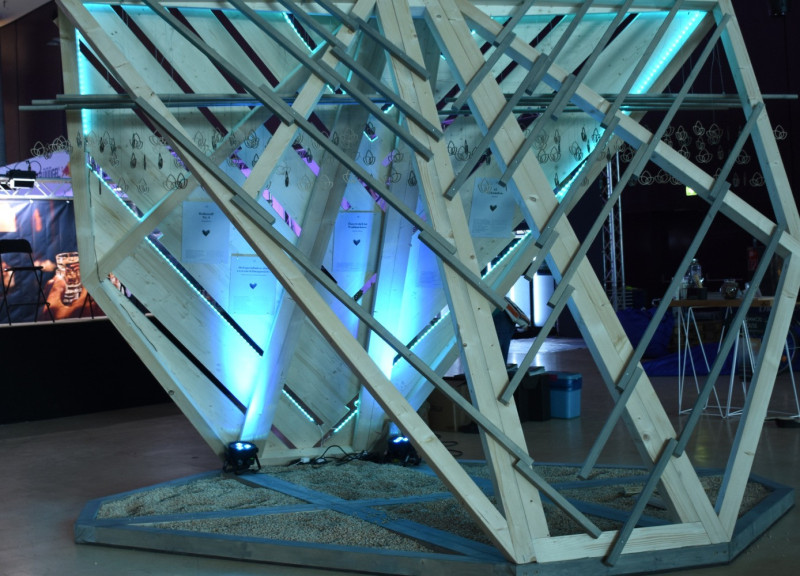5 key facts about this project
The HolzHerz pavilion serves as a unique installation designed to reflect nature through its engaging form. Located within a picturesque landscape, the pavilion acts as an educational space, emphasizing the significance of wood in modern design. The overall concept draws inspiration from the shape of a heart, symbolizing the bond between architecture and the environment, while aiming to create an inviting experience for its visitors.
Concept and Atmosphere
The design features a canopy made up of wooden flowers, resulting in an interior that feels vibrant and alive, reminiscent of being in a forest. Natural light and shades of green fill the space, contributing to its immersive quality. This arrangement allows visitors to experience the building as an extension of the surrounding nature, effectively combining indoor and outdoor elements.
Interactive Features
One notable aspect of the pavilion is its use of technology. QR codes are laser-etched into the joinery, providing an opportunity for visitors to engage with an online quiz about the importance of wood in Austria. By participating in this quiz, guests can learn about the environmental roles and economic significance of wood, thereby enriching their visit and making each interaction educational.
Materiality and Sustainability
The pavilion is primarily constructed from regional spruce, which highlights sustainable design practices and supports local resources. It showcases various types of wood finishes, such as natural, coated, and oiled, allowing visitors to view the different applications of wood in building projects. By focusing on local materials, the design establishes a connection to its environment and illustrates the qualities of wood as a material.
Spatial Experience
Designed for accessibility, the HolzHerz pavilion offers visitors views and interactions from multiple angles. The layout promotes exploration, encouraging individuals to engage with the structure throughout their visit. A soft layer of wooden pellets on the floor enhances the tactile experience, leading guests through the space while deepening their relationship with the pavilion's architectural story.
Within the wooden framework, the pavilion provides a rich sensory experience that combines sight, sound, and touch, contributing to an architecture that harmonizes with its natural surroundings.



















































